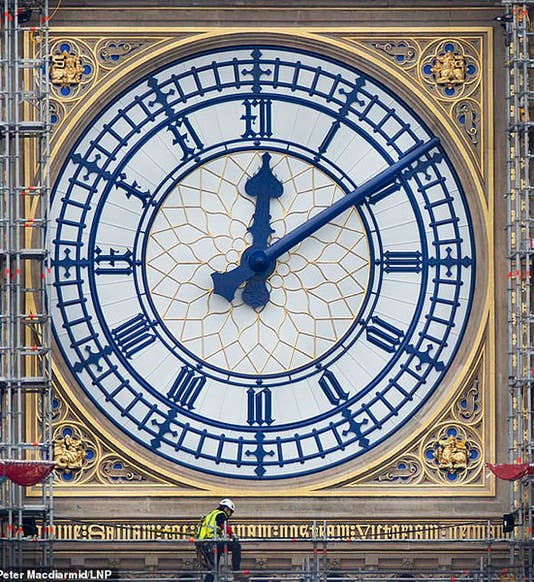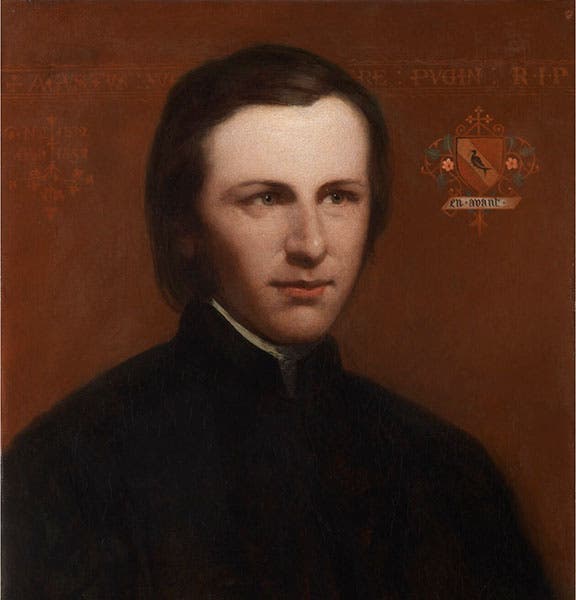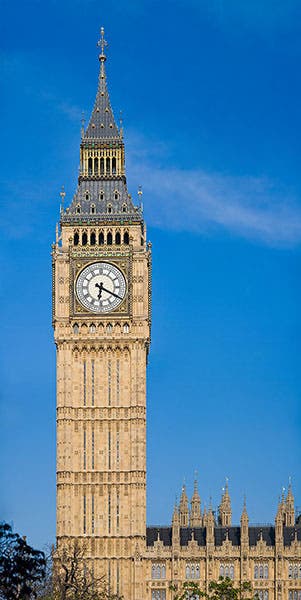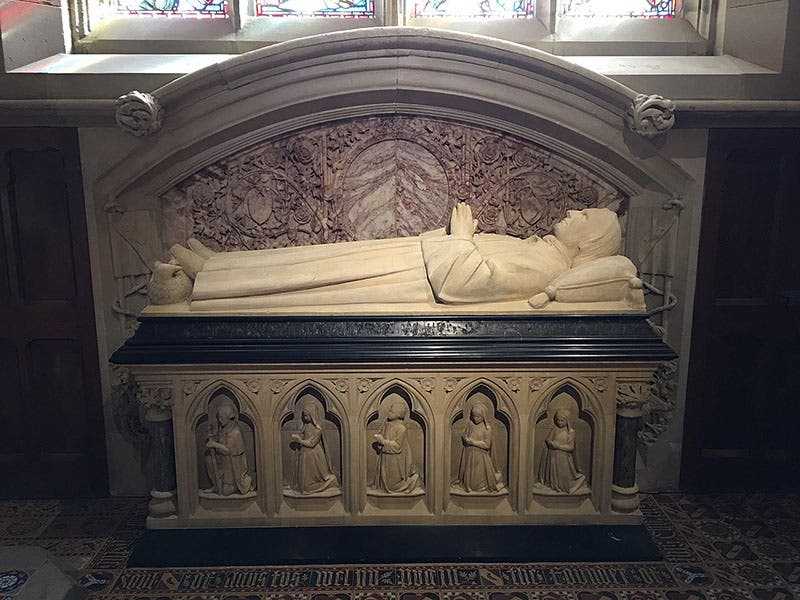Scientist of the Day - Augustus Pugin
Augustus Pugin, an English architect and art critic, was born Mar. 1, 1812. Pugin was a leader of what is called the Gothic Revival in the architecture of Victorian England. Very much opposed to neoclassicism, he sought an architectural style that was true to its materials, and he found that in medieval gothic buildings, which were made of stone and utilized the properties of stone. And, not incidentally, Gothic buildings were the buildings of a Christian era; indeed, he usually referred to Gothic as the "pointed or Christian" style, as in a book of 1841 with the title: The True Principles of Pointed or Christian Architecture. Pugin was critical of Greek architecture because not only was it pagan architecture, but it originated as an architecture for wood, with lintels set on posts, and made no sense when the material shifted to stone.
Pugin designed many churches, and city and college buildings, but we are going to discuss here only one: one of the most famous buildings in England, the clock tower for the Palace of Westminster. The Palace burned down in 1834, and there was a bitter contest to design a replacement, a battle of styles between the neoclassicists and the gothic revivalists. Pugin had converted to Roman Catholicism and could not submit designs directly, so his were submitted through Charles Barry, and Barry's submission won the design competition. It is not clear how much of the final design of the palace was Pugin's – Barry later tried to take all the credit – but most historians agree that Pugin was responsible for at least designing the palace interior.
And there is no doubt at all that Pugin designed the clock tower for the Palace, which was a slightly later addition (construction on the Palace began in 1840; the clock tower was begun in 1845). Pugin suffered a mental breakdown in 1852, but before he did so, he turned over the final plans, including those for the clock faces, to Barry. The clock tower was completed in 1859 (third image). Although often called Big Ben, that term is properly reserved for the largest of the bells for the striking clock. The clock itself was designed by Edmund Beckett Denison and was built by Edward John Dent and his son; it was the largest striking clock in the world at the time. So far as I know, Pugin made no design contribution to the clock, except for requiring that it turn a minute hand that was 14 feet long. The clock tower was renamed Elizabeth Tower in 2012. The tower has been in the process of renovation for 4 years now. As part of the restoration, the clock faces have been reglazed and the hands and numerals repainted to resemble the original Prussian blue (first image). Renovation should be completed this year.
Pugin did not live to see his tower completed – he died in the fall of 1852. The cause of his death is not known – some suspect hyperthyroidism, others childhood syphilis. He is buried in St. Augustine's Church, Ramsgate, with a fittingly gothic memorial (fourth image). Dr. William B. Ashworth, Jr., Consultant for the History of Science, Linda Hall Library and Associate Professor emeritus, Department of History, University of Missouri-Kansas City. Comments or corrections are welcome; please direct to ashworthw@umkc.edu.









